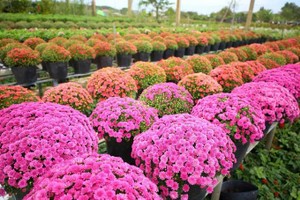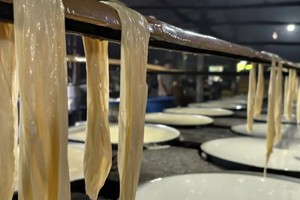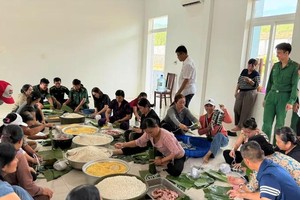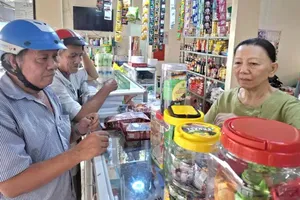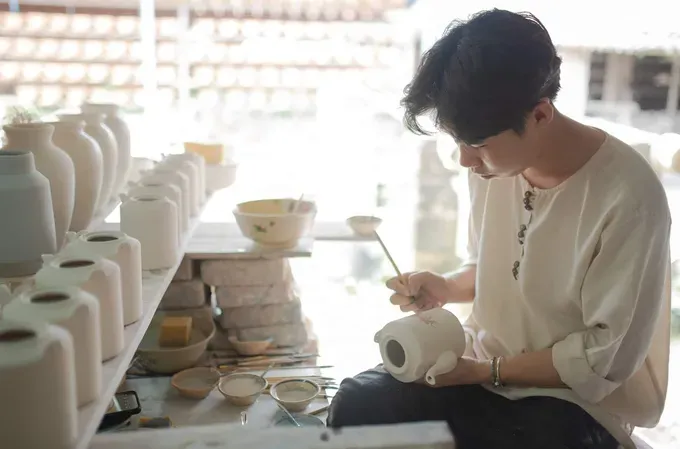
Adept with new technologies and workplace trends, one segment of young people in Vietnam is diving into content creation, weaving narratives from the simple fabric of their lives like a family meal for a death anniversary, a pilgrimage to the Ky Yen festival, the story of a local specialty craft village.
For over three years, 32-year-old Do Tinh from An Giang Province has been building her personal media channel, though she only started earning advertising commissions in the last six months. “I have a sales job, but I love building my channel and telling stories about my home and my region”, she explained. “There are things that seem ordinary to me, but they are actually unique to my home’s identity. If I don’t tell these stories and share them, then when my grandparents’ and parents’ generation is gone, these beautiful things could easily fade away.”
The path to maturity of 29-year-old Hoang Phuong also began with a familiar hometown staple. For nearly five years, this chairwoman cum director of the Vietnam Napro Cooperative in Lang Son Province has seen her non-GMO corn noodles gain a foothold in the market. That same period represents five years of her and her sister’s tireless work to preserve their native corn variety.
The corn plant was more than just a crop; it was a family legacy that supported the sisters through school and became the core ingredient for a young woman’s dream of exporting Vietnamese agricultural products. “My family has been growing this corn variety for over 20 years; it’s an indigenous, non-GMO crop”, Phuong noted. “We researched and developed a gluten-free corn noodle – a type of food that’s becoming increasingly popular.”
With a stable product and a receptive market, Hoang Phuong expanded from simply developing her native corn. She established the “To Mi Yeu Thuong” (Bowl of Loving Noodles) fund, grounded in the belief that sustainable value requires a parallel journey of giving back. Sourced from Vietnam Napro’s profits, the fund’s main activities are planting trees to protect the local environment and awarding scholarships to underprivileged students who have overcome adversity.
Swimming against the current of his generation’s typical choices is Huynh Xuan Huynh (born 1998), the director of Nang Ceramics Co. Ltd. in HCMC. Though born and raised in An Giang Province, he felt a powerful pull toward the rustic Lai Thieu pottery that has been a part of Southern Vietnamese life for generations.
“In the city, I see so many people, especially young people, using single-use plastics or glossy ceramic bowls that aren’t very safe for your health”, Xuan Huynh shared. “It made me remember my childhood. My family, like so many others in my hometown, used bowls and plates from Lai Thieu pottery – we called it stoneware. It wasn’t flashy, but it was incredibly durable and safe. That’s when I started seeking out the old kilns in Lai Thieu, buying those familiar items for myself, and beginning to connect with the artisans of the village.”
The old craft villages have indeed faded with the pace of urbanization, but for the youth, a challenge is also an opportunity to start anew. By contacting and persuading the kilns with small orders, Xuan Huynh built his customer base by showcasing the products on social media and at youth-focused fairs. The old pottery line is making a comeback with a fresh look and a communication strategy that keeps pace with modern trends, steadily growing its audience.
“It’s not wrong to say that rapid urbanization has caused many kilns to disappear; not many of the old master artisans are still practicing”, Xuan Huynh mused. “But within that same rapid urbanization, the remaining kilns see a need to reach outside markets, and they’re starting to adapt. And when they realize the quality and value of their products far exceed the cheap, low-quality ceramics from elsewhere, everyone gains the confidence to revive this traditional product, treating it as the hometown heritage it has been for generations.”
Beyond selling traditional Lai Thieu pottery, Xuan Huynh now also organizes tours for visitors to experience Southern craft villages firsthand. “If I don’t do this, don’t tell the stories, and don’t let visitors have these experiences”, he reflected, “how will people ever know that my hometown has such high-quality craft villages, with products that have been updated with new patterns and styles, and most importantly, are durable and safe for their health?”
